
15 minute read
THE INSTIGATORS OF OUR SOCIETY.
Elevation. Embellishment. Expansion. The immune system of our society, the media, is no stranger to acting as a catalyst in building up the popularity of a phenomenon. Over the past decade, a singular woman’s misguided recollection of a public figure’s death date has been enveloped by the digital world, spurring a website, a movie, a handful of books, and pop culture references regarding the media-formulated concept. Within the same period, the internet has grown into an impenetrable force hosting intensifying debates, outlandish assumptions, and a 24/7 forum to publicize and grow viewership over a multitude of topics. Since the Mandela Effect has been thrust into conversation, it has become a common term due to the application of the media that has placed it upon a pedestal of cultural interest. There is power in gaining the attention of the internet, a power that has proven the ability to amass a crazed obsession and the cause behind this suspicion-inducing confusion. As humans, we crave justification and the comfort of relatability; this encourages the push of a mob mentality as we would rather conform to the chaos. The chaos that has brewed into online conspiracy as the Mandela Effect expands from psychological explanation to parallel realities; further fanning the flame of the paranoia surrounding these cognitive stimuli responses.
There is no denial of the presence of false memories when, “faulty eyewitness testimony has been implicated in at least 75% of DNA exoneration cases.” Stressful situations such as acting as a witness before a jury continually proves to trigger confabulation, an honest mistake with the capability of turning a fractured memory into a fractured family with the wrongful convictions sealed by our false memories. The malleability of our memories will never fail to inflict skepticism onto our minds, but there is a solace provided by the media’s inflammatory tendencies, there is a solace in discovering that we all feel manipulated by our own minds at times, and there is a solace in the knowledge that you are not alone within the MANDELA EFFECT.
Writer: McKenna Madis & Chloé Golden
Photography: Tyler Pfeil
Design: Maitri Modi
Models: Mary Trantham & Stefano Beale he Psychedelic Sixties broke societal norms in every conceivable way. From music to culture to fashion, previously set boundaries were challenged and crossed in all forms of media and social movements. With the fight for peace taken upon by the youth during the height of the Vietnam War and Martin Luther King Jr.’s powerful speeches for civil rights, the introduction of mind-expanding drugs was at the heart of it all. More profound changes occurred during this decade than perhaps any other in the 20th century.
The Fight For Equality
The movement for African American equal rights did not get its start until the 60s. Black and white youths set out across the nation to put an end to racial discrimination through interstate travel on buses. The Freedom Riders faced attacks and violence at the hands of those who supported segregation, leading to the injury and arrest of several Riders. However, their efforts successfully exposed the nature of segregation and inspired similar efforts to ensure an end to injustice across the United States. In 1963, 250,000 people set out to Washington, D.C. for Martin Luther King Jr.’s “I Have a Dream” speech. MLK’s acts of peaceful protest led Congress to pass meaningful laws regarding civil rights.
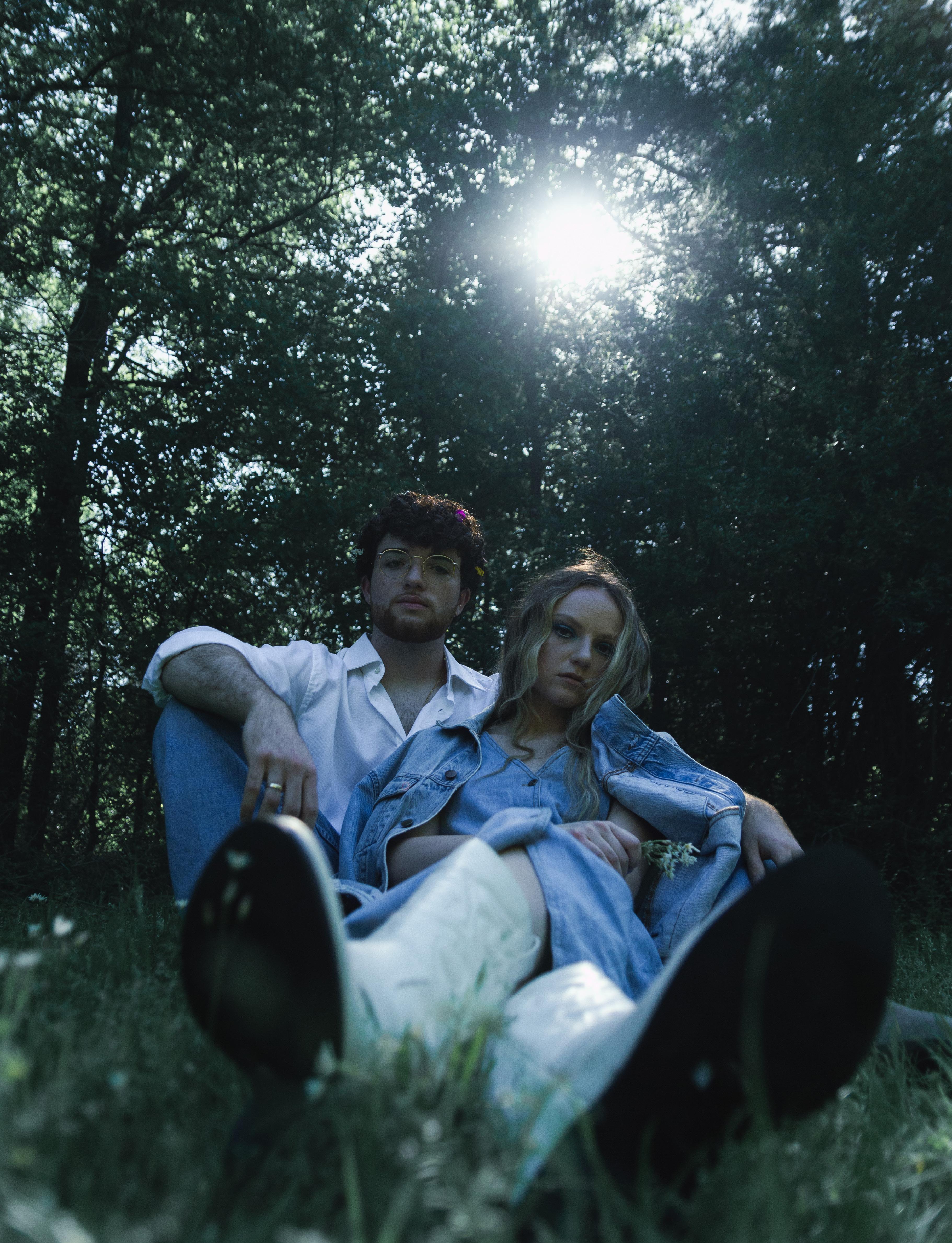
The feminist movement also gained traction in 1963 with Betty Friedan’s book “The Feminine Mystique.” It condemned what she called the domestic captivity of women. Women fought to break the mold of the 50s housewife and engaged in the idea of advocacy for women’s rights.
When Lyndon B. Johnson was sworn into office in 1964 after the assassination of John F. Kennedy, he enacted several plans such as the War On Poverty, ensuring jobs for 200,000 Americans, and the introduction of Medicare and Medicaid. This was a revolutionary decade for political reform, as these progressive ideas continued to infiltrate every other aspect of society.
The Drug Behind the Madness


Dr. Hofmann, a Swiss chemist discovered the drug Lysergic acid diethylamide (LSD). The great promise of LSD left behind the common way of doing things and replaced it with a cultural intoxication to return to the natural world. The anything-goes attitude led to a dramatic revolution of freedom, as many young people during this time refused to accept the long-standing traditions and historical values. College campuses became a breeding ground for political activism. The student body consisted of the first working-class kids and minority groups to attend college. Instead of institutionalized religions, countercultural enthusiasts were drawn to Buddhism, Hinduism, and the Jesus Movement; the new culture welcomed the notions of peace, love, and unity. This all-encompassing Hippie movement contributed to great changes, as the youth challenged established authorities and advocated for social tolerance.
One of the most radical events of this decade was Woodstock in 1969. Woodstock was an opportunity for people to escape into music and spread a message of unity and peace. The entire crowd was a sea of rebellious tie-dye. Tie-dye, with its vibrant colors and swirl-like patterns, encompassed the idea of acid visions and forms of visual transportation that mindaltering drugs can offer, further emphasizing the psychedelic movement. Even more so, Woodstock was a hotspot for all forms of drugs and psychedelics. Opium, LSD, marijuana, cocaine, psychedelic mushrooms, and many more were present at the festival. With the heavy influence of psychedelic drugs, like LSD, the entirety of the 60s experienced a radical form of change. No longer were people blind to privilege, but rather opened their eyes to the truth and decided to put to rest traditions and the old ways of the world.
Rhythmic Hypnosis

It is no secret that the music from the 60s contains some of the most influential and groundbreaking messages and sounds. Bands such as The Beatles and The Rolling Stones, and individual artists such as Jimi Hendrix or Otis Redding, introduced the world to a new era of music. This music highlights the morphing societal culture, vastly differentiating itself from the previous decade. The music of the 60s was heavily influenced by blues, rhythm, and both garage and blues rock. Again, LSD played a role in this decade’s culture; it led to the creation of funky and hypnotic beats used to mimic the high feeling. Songs such as “White Rabbit,” by Jefferson Airplane, or albums such as Tune in, Turn on, Drop Out by Timothy Leary, reiterated the new drug infatuation. “Tune in, Turn On, Drop Out” became the phrase of the era, as it called people to drop out of consumerism and focus more on themselves in the search for internal control, freedom, and solutions.
There are many decades that altered American society, but nothing is as socially and politically transformative as that of the 1960s. What started off as a continuation of the conservative 50s, quickly became a decade known for seeking liberation and freedom for women, minorities, and the youth. The Beatles said it best, “Living is easy with eyes closed, misunderstanding all you see.” This controversial, mind altering, and drug-induced decade encouraged society to open its eyes, giving birth to the most radical social changes this country has ever seen.

Since its inception, horror cinema has been almost entirely dependent upon presenting viewers with facets of our world that we find to be objectively frightening. A shaded junction on an otherwise well-lit path, screams that echo off trees with no discernable origin, the reflection of your own contorted face on a dark mirror; you name it and a horror film has probably done it. This genre earns its name by capturing the darkest corners of the human psyche and crafting even our most hellish nightmares into something solid and perceptible. These nightmares, however, come with a contingency plan; a promise that when things get too scary, one can simply turn on the lights and turn off the terror. After all, none of it is real, right?
Jordan Peele crafts horror that can not be turned off.
His horror is constant and ever-present. It lives and breathes alongside the skeleton of our country, beating quietly like the muted sound of a steady heartbeat. Simply put, Jordan Peele’s horror is reality and everything that reality is.
Who Is Jordan Peele?
Jordan Peele is a 44-year-old director, producer, writer, and actor. In 2012 Peele founded his own production company, Monkeypaw Productions, and through it, developed projects like “Get Out,” “Us,” and “Nope.” These films, which are not only genuinely scary, are also widely known for their ability to blend traditional horror, satirical comedy, and social commentary into one terrifying package, solidifying Peele as a certifiable horror genius since 2017. His films also portray a fascinating examination of the interaction between horror and race, with “Get Out,” “Us,” and “Nope” all containing strong subtextual elements about racial injustice in contemporary society. Ultimately, what makes Peele’s films so unique is the way in which they blend the horrors of reality with those of our imagination. They do not produce a clear-cut villain or unmask one terrifying monster, but rather examine the human race in a mass sense, conveying that as a joint force, we are all the villian. We are all the monster.
“Get Out” and Scientific Racism

2017’s “Get Out” was the beginning of Peele’s celebrated directorial work. The film, which was also written by Peele, not only earned him the impressive initial score of 100% on Rotten Tomatoes, but also made him the first African American to win the Academy Award for Best Original Screenplay.
“Get Out,” in its simplest form, is an overt commentary on racism. Utilizing important elements of structural racism, tokenism, and white feminism, the film follows interracial couple Chris Williams (Daniel Kaluuya) and Rose Armitage (Allison Williams) as they visit Rose’s parents in Upstate New York. While Chris is already uneasy about the fact that Rose’s parents do not know he is Black, she constantly attempts to reassure him by presenting her parents as progressive figures that, “would have voted for Obama twice if they could.” Chris then continues to encounter a continuous microaggressions the constant sexualization of the Black body, until eventually learning that the Armitages are not your average racist suburban white family. They are instead, the masterminds behind a modern-day scientific slavery operation that transfers the brains of white people into the physically superior bodies of kidnapped Black people.
Interestingly, one of the most fascinating and crucial aspects of “Get Out” is that the Armitages do not appear to perceive themselves as racist. Despite taking part in what is essentially high-tech slavery, Peele portrays the family as a close equivalent to modern-day eugenicists, utilizing their characters to convey deeply rooted biological racism. Rather than the overt hate crimes and cruel language that is often associated with how society perceives the concept of racism, the Armitages display a more nuanced form of hatred, seeing themselves as helping Black citizens reach their full potential by combining Black physical advantages with white determination.
Another important part of understanding “Get Out” is understanding Peele’s symbolism of the deer or Black Buck. Deer are a recurring motif throughout the plot. Rose hits one in the road in the very beginning of the film, Dean Armitage makes comments about controlling the deer population, and the family has a taxidermy buck in the room in which Chris is imprisoned. So, why is this? The deer symbolism in this film plays with the idea of the Black Buck — a controlling image for Black men that portrays them as dangerous, hypersexual, and aggressive. Since the Armitage’s entire belief system revolves around the idea that Black men are nothing but virile bodies whose sole purpose is to act as a vessel for white intelligence, the deer seen throughout the film are symbols of those men, as well as the scientific and cultural racism that binds them in the Armitage’s sadistic experimentation.
“Us” and Contorted Americana

“Us” is the second notch in Peele’s directorial belt. Perhaps the most intricate and thematically complex of Peele’s works to date, “Us” is not a film that could ever be described as an easy watch. It may take the viewer a couple watches and several internet deep-dives to fully grasp the symbolic density of this movie, and even then there are probably a multitude of things that one may have missed.
“Us,” at its fantastically convoluted core, is a film about the extreme duality and divide that exists within the United States. Exploring themes like class inequality, political finger-pointing, and even religion, “Us” is a stunning social commentary about the us vs. them attitude that our country has adopted, as well as how it manifests itself in practically every aspect of American pop culture.
The film, which flashes back and forth between 1986 and the present, follows the Wilson family on a vacation to Santa Cruz, California. Adelaide Wilson, played by Lupita Nyong’o, is portrayed as uneasy with this destination choice, as the 1986 flashbacks indicate that she experienced some kind of traumatic experience on the Santa Cruz boardwalk while visiting with her family back in the ‘80s. The present however offers its own share of ambiguous horrors, with the family experiencing a slew of odd coincidences and then eventually The Tethered — a terrifying family of doppelgängers that parallel the Wilsons in every aspect besides behavior and dress. Played out like a twisted homeinvasion horror, the Wilsons enter into a bizarre combat with their doubles, fighting not only for their lives, but also to understand what exactly the tethered are and what they want.
While trying to fully digest and explain all of the symbolic meaning in “Us” is a near-impossible task, the film explores duality through the experiences of the Wilsons and their tethered twins. Ultimately, the Tethered are not only a metaphorical representation of ourselves as our own worst enemy, but also reflect an American divide in terms of privilege, resources, and opportunity.
“We are our own worst enemy, not just as individuals but more importantly as a group, as a family, as a society, as a country, as a world,” Peele said in an interview with The Guardian about the film. “We are afraid of the shadowy, mysterious ‘other’ that’s gonna come and kill us and take our jobs and do whatever, but what we’re really afraid of is the thing we’re suppressing: our sin, our guilt, our contribution to our own demise … No one’s taking responsibility for where we’re at.”
“Us” as a commentary on America itself truly begins to reveal itself when Gabe Wilson (Winston Duke) asks the Tethered what they are, and Adelaide’s doppelgänger bluntly replies, “We’re Americans.” Upon further inspection of this concept, it also becomes clear that Us doubles as U.S., essentially portraying the entire film through the lens of our country as a divided landscape. It is later revealed that the Tethered exist in a type of warped, underground America, living the same lives as those above them, but in a way that is contorted and dark, like someone took the country and stripped it back to its shadowy skeleton. Privilege and opportunity make themselves apparent as key themes in the final eerie shot of the film, where it is ambiguously insinuated that the Adelaide Wilson followed throughout the entire film is actually one of the Tethered who switched with the real Adelaide when she visited back in 1986. Ultimately, she could’ve lived an entirely different life, one of love and light and opportunity, but instead she was cast into the dark as a deviant, partially formed version of a human.
Nope and the Art of Spectacle


“Nope” is Peele’s most recent project. Straying away from the more traditional horror tropes of “Get Out” and “Us”, this film toys with the sci-fi genre, presenting its monster as a giant alien-type creature. While grossing and scoring slightly less than Peele’s previous films in terms of audience and critical reception, “Nope” definitely does not lack in the department of dense symbolism or explosive deeper meanings, taking audience members down a bizarre rabbit hole of spectacle, exploitation, and extraterrestrial activity.
“Nope” stars actress Keke Palmer and “Get Out” actor Daniel Kaluuya as Emerald and OJ Haywood, a brother and sister who have recently taken over the family ranch after the odd and sudden death of their father. After witnessing what appears to be a UFO in the skies above the ranch, Emerald, OJ, and tech store employee Angel Torres become obsessed with capturing the Oprah shot, or the image of this ship that will bring them fame and fortune. It is quickly revealed that this UFO is not an alien spaceship at all, but an alien itself — nicknamed Jean Jacket by OJ — that is hovering above the ranch and “eating” both animals and people. This plotline is spliced with that of Ricky “Jupe” Park and Gordy the chimp, stars of the ‘90s sitcom Gordy’s Home which was discontinued after Gordy viciously attacked the actors on set.
While not as clear-cut or packed with obvious social commentary as “Get Out” or “Us”, “Nope” is very much still a criticism of modern society, with Jean Jacket and Gordy reflecting the disastrous consequences of humans attempting to utilize nature for their own profit. Spectacle, which is seen both in the initial awe of Gordy and Jean Jacket as well as in the tragic results of their retaliation, is the predominant theme of the film, manifesting itself in the various symbols that Peele produces. “Nope” also is greatly intertwined with Hollywood and the entertainment industry, with OJ and Emerald being related to the unknown Black jockey who rode a horse in the first-ever motion picture. Eadweard Muybridge, the photographer responsible for these images lives in history and is memorialized by history while the unnamed jockey remains just that: unnamed. Jean Jacket and Gordy also play into the Hollywood plotline as symbols of the monster that is fame and what happens when you attempt to tame it.
Unfortunately, the frightening familiarity and pure depravity of Peele’s modern nightmares are not elements of life that will be a thing of fiction anytime soon. They are deeply rooted within our country’s history and society itself, remaining hidden behind closed doors, whispered conversations, and the darkest parts of ourselves that we mask with proprietary and polite conversation.
SO, NEXT TIME YOU’RE CRAVING A GOOD SCARE, PERHAPS LOOK OUT THE WINDOW.
Just a couple of digits is all it takes for philosophers, Renaissance artists, mathematicians, architects, and state-of-the-art cosmetic surgeons to obtain perfection. The idea of a Golden Ratio has captured the attention of humans for centuries. With an infinite number of proceeding digits, the ratio society has conjured up is defined by the irrational number 1.61803339. If you were to draw a line and cut it into two, the length of the larger piece divided by the smaller piece should be equal to the length of the whole line divided by the length of the larger piece. This proportion, 1:1.61803339, deemed aesthetically pleasing to the eye, is also referred to as the golden proportion or the divine proportion, denoted by the Greek letter . While it may appear to be a pile of arbitrary numbers, phi consistently makes a bold debut in science, nature, and aesthetics.
This alluring concept sprung roots dating back circa 300 B.C.E in ancient Greece. Mathematicians, like Pythagoras and Euclid, observed occurrences of this ratio in the natural world. Namely, if one were to inspect the spiral formation of a nautilus shell, one may find that many shells develop a spiral with proportions near the phi golden proportion.
Some could argue that the praised phi ratio is a necessity for the existence of life. From tree leaves to pine cone seeds to a beguiling sunflower field; this mystical number can be encountered everywhere. In order for the most ideal distribution of seeds, sunflower spirals shape into a proportion that approaches phi. Furthermore, this reoccurring ratio makes a presence within our human anatomy. The British Medical Journal conducted a study that proves individuals with a heart rate (diastolic pressure: systolic pressure) similar to the divine proportion are less susceptible to developing heart conditions. Diving into the most unique unit of human life, our DNA, its structure contains a double helix. Its structure is a double helical structure, a two-sided spiral that wraps long and comes close to perfection. around itself, measures 21 angstroms wide by 34 angstroms long and comes close to perfection.
In addition, this holy grail measurement can extend to crafting the most harmoniously balanced face. Facial aesthetics are often associated with balance and ideal proportions. In an effort to map the most flawless face possible, German psychologist and mathematician, Gustav Fechner, crafted a set of guidelines to build a perfect complexion. The length of the face would be nearly 1.618 times longer than its width with the volume of the lower lip being nearly 1.618 times larger than the upper lip. The list of ideal facial proportions is endless, however, this is merely a glimpse of what is considered ethereal beauty. Can this single rigid number truly encompass perfection? Many criticize the golden guidelines of beauty as it does not take into account the dynamism of trends and standards for “beauty.”
Ancient Greece hailed unibrows, Ancient China praised porcelain-like fair skin, and the 1920s flapper girls of the United States sported ruby red lips and finger-wave updos. Conversely, the 2000s favor foxy upturned eyes and chiseled cheekbones. Needless to say, beauty has and always will continue to evolve and it cannot, nor should, be restricted to one definition. According to the golden ratio, Bella Hadid and Amber Heard are the only individuals to bear a pretty complexion; however, this fails to include the iconic figures Beyonce, Sofia Vergara, or Jennie Kim.
The divine proportion has staked itself as a meaningful value for its aesthetic prominence in nature, but is it possible to cater to all trends – why should we use a number to define beauty? It can be fascinating to ponder over an equation that could lead to this form of otherworldly, celestial perfection and there is no denying its presence in Mother Nature. As for the human form, there is no boundary of what is deemed beautiful.


Writer: Hannah Toy
Photography: Lindsey Lopez
Design: Lynn Nie
Models: Ra’Maia Espinal & Lance Gomez










